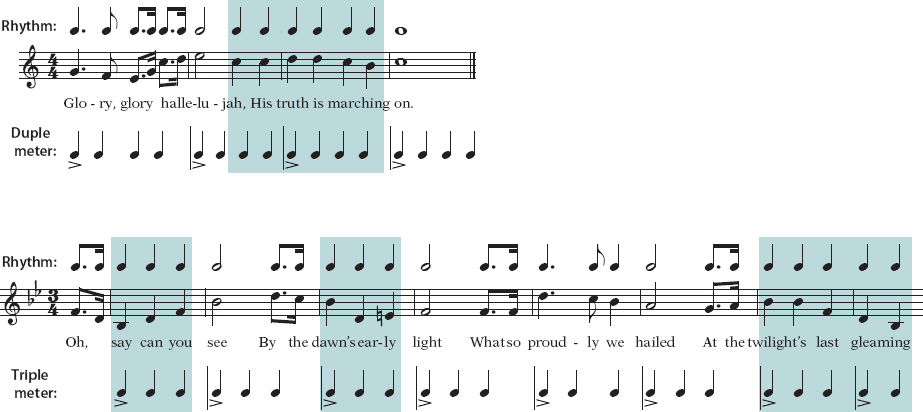Rhythm and Meter
Rhythm in the most general sense refers to the entire time aspect of music and, more specifically, a rhythm refers to the particular arrangements of long and short notes in a musical passage. In most Western music, duple or triple meter serves as the regular background against which we perceive music’s actual rhythms.
We can see that the musical rhythms need not always coincide with the regular beats of the meter. And, as the rhythm first coincides with the meter, then cuts across it independently, then even contradicts it, all kinds of variety, tension, and excitement can result.
Musical notation has developed a conventional system of signs (see Appendix B) to indicate relative durations, or long and short notes; combining various signs is the way of indicating rhythms. Following are examples of well-

The above examples should not be taken to imply that meter is always emphasized behind music’s rhythms. Often the meter is not explicitly beaten out in the music’s rhythms. It does not need to be, for the listener can almost always sense it under the surface. Naturally, meter is strongly stressed in music designed to stimulate regular body movements, such as marches, dances, and much popular music.
At the other extreme, there is nonmetrical music. In such music, the rhythms suggest no underlying pattern of strong and weak beats at all. For example, the meandering, nonmetrical rhythms of Gregorian chant contribute to the cool, otherworldly, and spiritual quality that devotees of this music cherish.